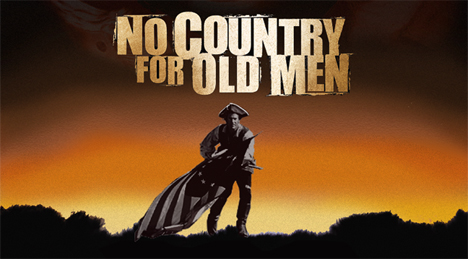| The Breed's Hill Gazette February 2009 | |
 Article By D.H.T. Shippey and Michael Burns |
|
|
“They all seemed ancient when I was in school.”
So says my friend Bob when I tell him the actual ages of those white-wigged founders at the time of the Revolution. It seems to surprise a lot of people to discover just how young many of our national heroes were when they decided to start a new nation. To be sure, we had some wise older heads involved in our founding. Consider Benjamin Franklin—he was 70 when he signed the Declaration of Independence, but on the other end of the spectrum was 27-year-old signer Edward Rutledge. Today Rutledge would still be three years too young to be eligible for the Senate. Thomas Jefferson, who actually wrote those wise and eloquent words, was 33 at the time. If you think John Adams was an old curmudgeon at the 2nd continental Congress, you’re right--he was 41. That is six years younger than Barack Obama as he enters the Presidency. But the names and ages I just gave you are not the youngsters of the Revolution; they are the old wise heads. The young founders were on the field of battle.
Washington, the General who would one
day look out sternly from countless textbook paintings, was 43 when
he became Commander and Chief of the army. Only two other people
have held that title at so young an age--John F. Kennedy at 43 and
Theodore Roosevelt at 42. An athletic and energetic 43 year old
Two men who served under
|
The age
that you were supposed to be able to enlist yourself in the
Continental Army without permission from a parent was 16. Joseph
Plumb Martin was 15 and lied to get in. We have records of at least
one fifer enlisting at age 10 and John Holmes, a drummer in the 11th
Pennsylvania Regiment, was 13 when he joined in 1778. The age of
militia soldiers could vary greatly--in fact you might have a young
man, his father and grandfather all serving in the same regiment.
For the Army, the average age works out to around 18 or 19, which
feels more acceptable to our modern sensibilities. Remember,
however, that an average means that you are balancing extremes on
both ends of the equation. Most of us today would have great
difficulty seeing a 13 year old (eighth grader) march off to defend
our rights and liberties, but it happened and it happened regularly.
The images we carry with us of the
Founders today are usually taken from paintings created many years
after the Revolution in the early days of the Republic. This would
be like taking a current picture of Elizabeth Taylor and telling
people she was the great beauty of her time, with no images from her
glory days. To understand the passions and vitality of the
Revolutionary generation we need to see them as they were in the
Revolution--active, vibrant, and full-blooded. For eight years, war
raged across the countryside of what would become the
|